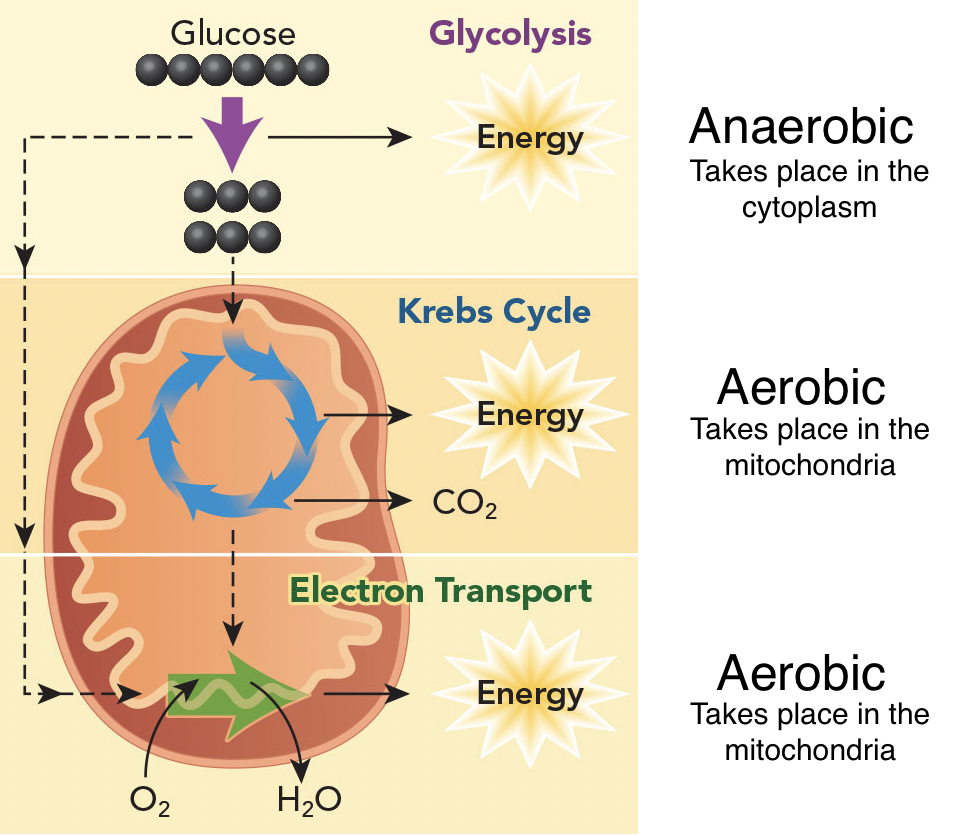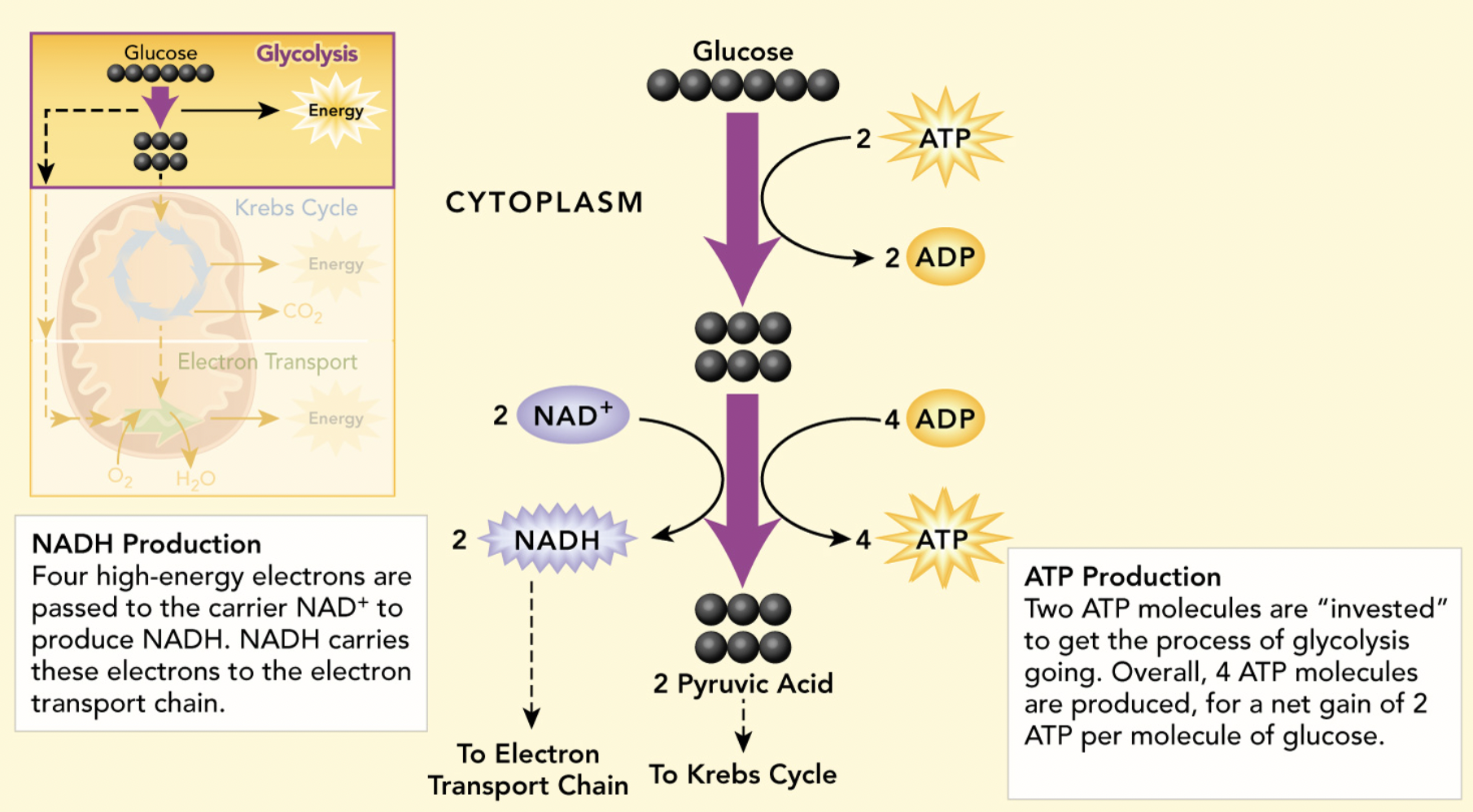Chapter 10 - Cellular Respiration
Cellular respiration is a process that releases energy by breaking down food molecules, including glucose, in the presence of oxygen. This makes it an aerobic process, requiring oxygen, unlike an anaerobic process, which does not require oxygen.
Cellular respiration is a combustion reaction; “if it took place in just one step, all of the energy from glucose would be released at once, and most of it would be lost in the form of light and heat [an explosion]. Clearly, a living cell has to…release the…energy…a little bit at a time, trapping the energy in the form of ATP."

"…the Krebs cycle does not directly require oxygen…[but] it cannot run without the [aerobic] electron transport chain."
Glycolysis
Glycolysis is the first set of reactions in cellular respiration in which a molecule of glucose (a 6-carbon compound) is broken into two molecules of pyruvic acid (each molecule is a 3-carbon compound). Produces ATP and NADH. There are ten reactions, catalyzed by enzymes. It occurs in the cytoplasm.
Reactants: One molecule of glucose, two molecules of ATP
Products: Two molecules of pyruvic acid, two molecules of NADH, and four molecules of ATP
"One of the reactions of glycolysis removes 4 electrons, now in a high-energy state, and passes them to an electron carrier called NAD+…each NAD+ molecule accepts a pair of high-energy electrons and a hydrogen ion…[transforming it into] NADH." The NADH molecules hold the high-energy electrons, which can be used in the production of ATP when oxygen is present.
Two molecules of ATP are used in the beginning, but four more molecules are produced through phosphorylation, giving glycolysis a positive net gain of two molecules of ATP per one molecule of glucose broken down.

The NADH produced in glycolysis carry on to be used in the electron transport chain, and the molecules of pyruvic acid carry on to be used in the Krebs Cycle.
Krebs Cycle
The Krebs cycle is a set of energy-extracting reactions in which pyruvic acid molecules are broken down into CO2. It takes place in the matrix, the innermost compartment of the mitochondrion.
Acetyl-CoA Bridge
- Pyruvic acid molecule(s) enter the matrix by passing through the two membranes of the mitochondrion
- Per molecule of pyruvic acid, one carbon atom breaks off and is released as CO2
- The remaining two molecules form acetic acid, which is joined to a compound called coenzyme A to form the molecule acetyl-CoA
Reactants: 2 molecules of pyruvic acid (pyruvate)
Products: 2 molecules of acetyl-CoA, 2 molecules of carbon dioxide, 2 molecules of NADH
Citric Acid Cycle
- Acetyl-CoA hands off the 2-carbon acetyl group to 4-carbon molecule OAA (oxaloacetate) to form citric acid, a 6-carbon molecule
- Citric acid (6-carbon) is turned into a 5-carbon molecule by releasing a carbon
- The 5-carbon molecule is turned into a 4-carbon molecule by releasing a carbon
- In this, 2 molecules of CO2 are released
- The remaining 4-carbon molecule is OAA (oxaloacetate) and can combine with the 2-carbon group from acetyl-CoA to form citric acid once again
- The citric acid cycle happens twice per molecule of glucose (each molecule of glucose → 2 molecules pyruvic acid → 2 molecules of acetyl-CoA, and each molecule of acetyl-CoA → one turn of the cycle)
Reactants: 2 molecules of acetyl-CoA, oxaloacetate
Products: 4 molecules of carbon dioxide, more oxaloacetate (recycled), 2 molecules of ATP, 8 molecules of NADH, 2 molecules of FADH2*
*NADH and FADH2 molecules produced go on to the electron transport chain
Electron Transport Chain
- \
